A user can exist without additional connection to a project, though the utility is quite limited, with the most obvious utility being the contact form. Capabilities in this section are those accessible to all PanHunter users.
This the multi-page printable view of this section. Click here to print.
Basic Capabilities
- 1: Communicating With PanHunter: Using The API Key
- 2: Giving Feedback: Using The Contact Form
- 3: Quality Of Life Features
1 - Communicating With PanHunter: Using The API Key
The Api Key section in the sidebar leads to the page where users can manage their API Key. API keys allow developers to access PanHunter from scripts or custom apps.
Creating An API Key

The API key page allows the creation of an API Key if no API Key currently exists. Clicking on Create New Api Key will display the newly created key exactly once, with a button to copy it to the clipboard.
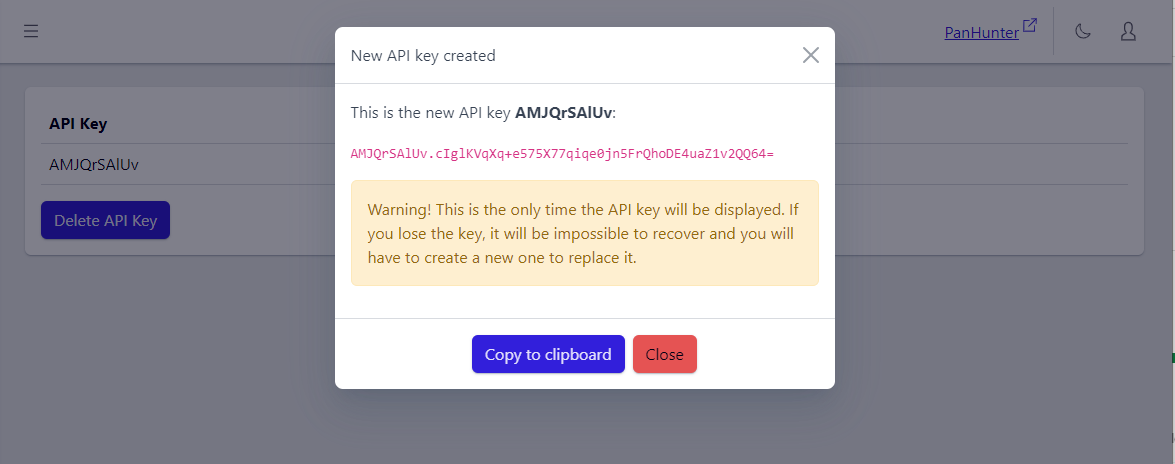
Info
Make sure to record this key! The full key will not be displayed again.Displaying An API Key
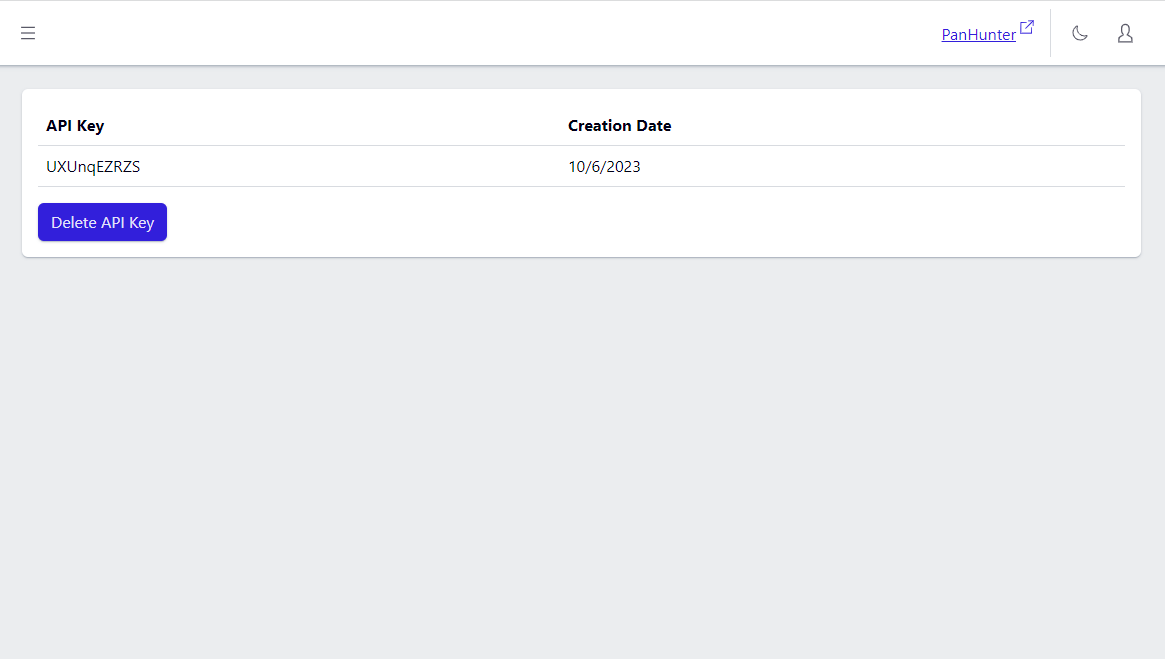
The API key identifier, creation date, and delete button will be displayed. It is not possible to view the full API key: if it is lost at this point, it will be necessary to delete the current key and create a new API key.
Using An API Key
One possible application for our API keys would be connecting custom applications to PanHunter. The API Key lets developers obtain PanHunter information via its APIs. APIs exist to retrieve project and user information, or data stored in PanHunter.
The API keys are used by adding the header
X-API-KEY: <api key>
to an HTTP request made to the PanHunter API.
2 - Giving Feedback: Using The Contact Form
A contact form is accessible to all users.
This contact form, once filled, sends the information given to the PanHunter support team (panhunter_support@evotec.com).
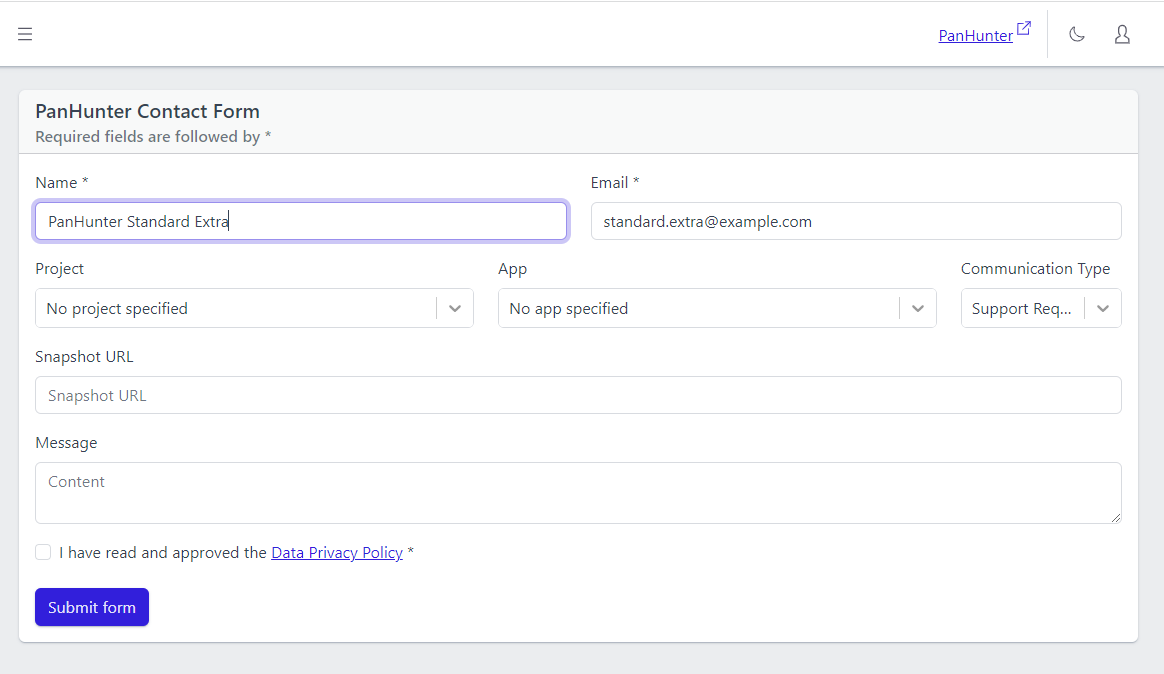
Users can access the contact form either by going directly to the admin app and selecting Contact or by clicking the “Contact” icon in PanHunter. This icon should appear both on the start page and within the apps and is displayed in the following picture within the red square.

The form will autofill some of the information depending on how it is reached. The following sections will give a few more details about each of the parameters:
Name
Required. Autofills with the user’s first name and last name if available.
The name of the person the PanHunter support team team should communicate with.
Required.
Autofills with the user’s registration e-mail.
The e-mail to use for further contacts.
Project
Optional.
Autofills if the contact form was reached via a link in a PanHunter App.
The project where the user noticed what they want to communicate to the support team.
App
Optional.
Autofills if the contact form was reached via a link in a PanHunter App.
The app where the user noticed what they want to communicate to the support team.
Communication Type
Required.
Defaults to Support Request.
The user can select whether their communication should be classified as a Support Request, a Bug Report, or Feedback.
Snapshot URL
Optional.
Autofills if the contact form was reached via a link in a PanHunter App.
The URL for a snapshot of PanHunter.
A snapshot saves the state of PanHunter at the time when it was taken, allowing for a quick reproduction of the user’s setup.
Message
Optional.
Message to the support team.
3 - Quality Of Life Features
The Sidebar
All of the sections of the app a user has accessed to to are displayed in a hideable sidebar. Clicking on “Projects” unfolds a subsection with the names of the projects a current user has access to. Clicking on one of these project names leads to that particular project’s details.
The sidebar can be displayed or hidden by clicking either the arrow in the bottom left of the app or the three lines at the top left.
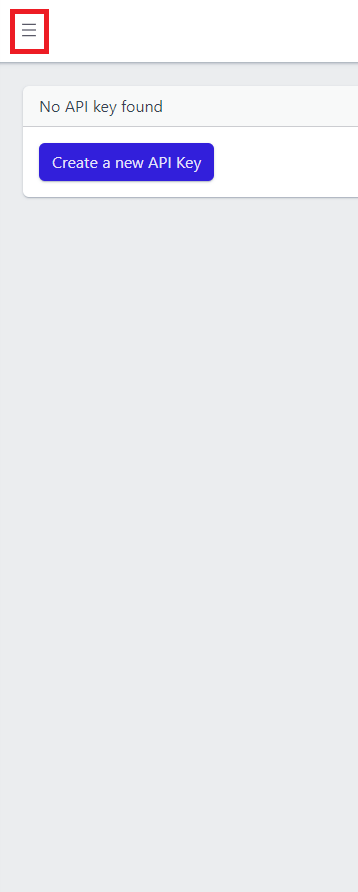
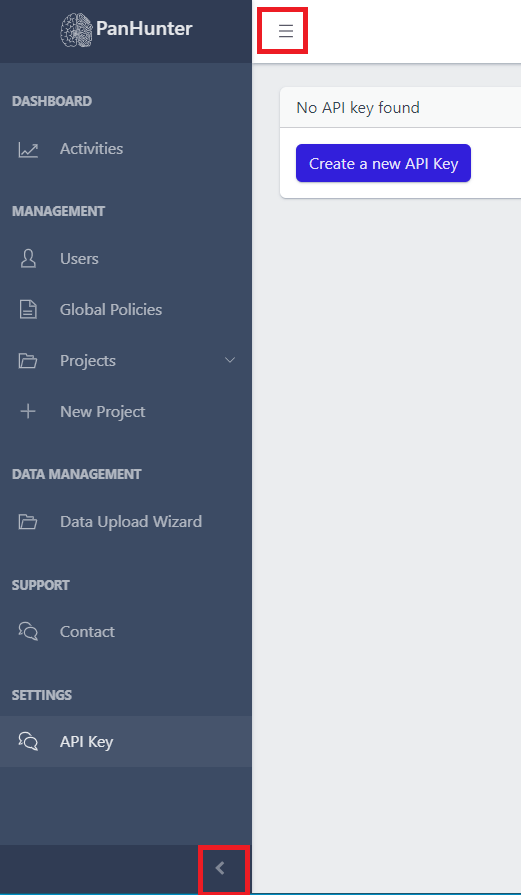
Light Mode and Dark Mode


There is an icon at the top of the screen allowing change to light mode (a sun) or to dark mode (a moon) depending on the current mode.
Returning To PanHunter

The PanHunter link brings a user back to the PanHunter Start Page.
Logging Out

Clicking on the person symbol in the top right corner displays the current user’s username and a logout button.
Clicking the person again hides the username and the logout button